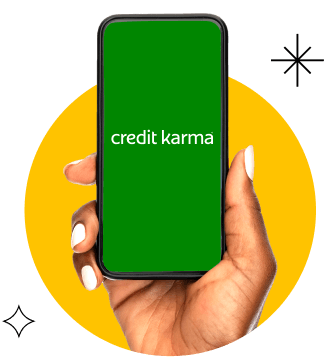In a Nutshell
If you feel like you’re drowning in credit card debt owed on more than one credit card, you might need more than motivation to help you get control of your financial situation. Let’s talk about the best way to pay off multiple credit cards and how to prioritize which card to pay off first.You might be wondering, “What’s the best way to pay off multiple credit cards?”
If you’re juggling debt on multiple credit cards, it may help to take a close look at your finances and come up with a realistic plan of attack to get out of debt.
Let’s take a look at a few strategies to help you get started.
Best strategies to pay off multiple credit cards
If you can afford to do so, stop using your credit cards.
This may not be possible for everyone. After all, you still have to put food on the table and pay your bills. If you can’t cut your credit card use altogether, take a look at your budget and consider using your debit card instead whenever possible.
Additionally, consider at least one of the following options that might help you take control of your debt.
Credit Karma Guide to BudgetingPay more than the minimum
Sometimes it can be tough to pay the minimum amounts due on your credit cards every month. But if you find yourself in a position to pay a little extra and do so as often as you can, it can go a long way toward reducing your overall debt.
Here’s how it works: If you’re able to pay more than the minimum, whatever extra you can afford may be applied toward the principal balance rather than toward accrued interest. This means that you’re working to reduce the amount due, which may help you pay it off faster.
When it comes to applying extra funds to combat your debt, you often hear of two popular strategies: the snowball method and the avalanche method.
- Snowball method — You make your minimum payments on all of your credit cards. Then, you focus all of your extra money on paying off the card with the smallest balance. Once you pay that card off, you take the money you were paying for that card and put it toward the card with the next smallest balance. This strategy is good for people who need a little extra motivation to stay focused.
- Avalanche method — You still make your minimum payments on all of your credit cards, but with one major difference. You use the extra cash to pay off the card with the highest interest rate. Once that card is paid off, you apply your money toward the card with the next highest interest rate. This strategy is good for people who want to save more money on interest charges.
Try negotiating lower interest rates
When it comes to paying off credit card debt, it’s possible you could end up in a situation where you pay more money toward interest charges than toward the actual balance, or principal.
This can be understandably frustrating and make you feel like you’re running in place.
One thing you can try is calling your credit card issuers, explaining your situation and asking for a lower interest rate, even if it’s just temporary. There’s no guarantee they’ll say yes, but it doesn’t hurt to ask — especially if you’ve been working on your credit and you know it’s stronger now than it was when you were initially approved for the card.
This could make a big difference and help you pay off your credit card debt faster.
Set up autopay
A simple step that can make a big difference is turning on a credit card issuer’s autopay feature.
Setting up autopay may help safeguard against late payments, which typically trigger costly fees getting added to your balance. If you opt for autopay to help avoid those fees, make sure your bank balance can cover your preset payment amount by the payment debit date.
Using autopay can also aid in building healthy financial habits by helping you pay your credit card bills with minimal effort.
Consolidate credit card debt
If you don’t want the hassle of managing multiple credit card payments each month, you could look into consolidating your debt into one monthly payment. There are various options for consolidating debt, but depending on your situation, you may want to do this with either a balance transfer credit card or with a personal loan.
Balance transfer card
If you choose a balance transfer card, look for one that offers an introductory 0% APR on balance transfers and charges a low balance transfer fee. But be careful, because after the intro APR expires, your interest rate could skyrocket. For that reason, this strategy makes more sense for someone who plans to pay off their credit card debt within the intro APR period. So if you choose this method of paying down your debt, make sure you understand what that period is and when it expires, and limit use of the card to the balance transfer, avoiding any purchases with the card.
Depending on whether you’re approved and the new credit limit you might receive, you may be able to pay off your existing credit cards with a balance transfer card. But keep in mind that balance transfer cards often come with other restrictions and fees, so make sure to read the terms and conditions carefully.
Remember that you ultimately still owe the money. But the benefit is that you’re likely reducing the number of monthly payments and potentially lowering your interest rate, which may help you tackle your debt in a more manageable way.
Personal loan
While balance transfer credit cards may sound appealing as a debt consolidation tool, they may not always be right for your situation.
For example, if you’d like to spread your payments over a longer period of time, a personal loan may be a more attractive option than a balance transfer.
Additionally, if you qualify for a personal loan with a low interest rate, you may save money over your repayment period. Remember that a balance transfer card may only offer an introductory 0% interest APR for a period of time. Your interest rate after the introductory period could be either fixed or variable, which could make it more difficult to budget what your monthly payments may be. But with a personal loan, installment payments are typically fixed and predictable, which could make budgeting your monthly payment a bit easier.
If you’re considering a personal loan to consolidate your debt, make sure you do your homework. Some lenders charge origination fees and late fees, among others, so read any loan agreement carefully before you sign.
You can learn more in our review of the best debt consolidation loans.
Next steps
After you’ve consolidated your debt and paid off your credit cards, you might wonder if you should close those accounts. But we don’t recommend you do that.
That’s because closing your credit cards can adversely affect the length of your credit history, which in turn can hurt your credit. So you’d be better off keeping them open, but taking them out of your wallet and putting them somewhere safe, where you won’t be tempted to use them.
Now that you’ve got your finances sorted, it may be a good time to build an emergency savings account that you can tap into the next time something comes up, so that you won’t fall back into debt. You can start by setting aside a small amount every month and watch it grow over time.




